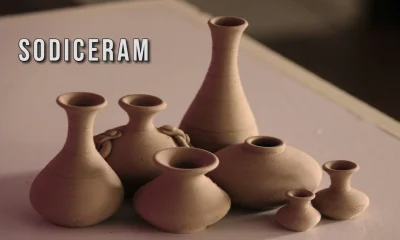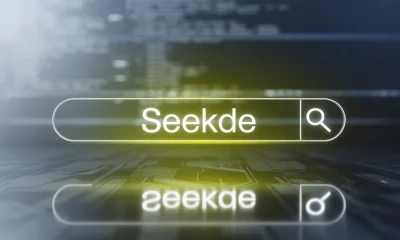Jeroen Dik is an intriguing figure known for his contributions to a variety of fields, including science, technology, and entrepreneurship. A Dutch innovator with a reputation for bridging the gap between academic theory and real-world applications, Dik’s work has influenced a wide range of industries from biotechnology to artificial intelligence. In this article, we will explore Dik’s background, career achievements, and his lasting impact on modern science and technology.
Early Life and Education
Born and raised in the Netherlands, Jeroen Dik was drawn to the sciences from an early age. His natural curiosity and desire to understand how things work propelled him toward a career in research and development. After completing his high school education, Dik went on to pursue a degree in a scientific discipline that would set the stage for his later work. He attended the University of Amsterdam, where he studied molecular biology and biotechnology, laying the foundation for his scientific career.
During his time at the University of Amsterdam, Dik’s research interests evolved. While his initial focus was on molecular biology, his academic curiosity broadened to encompass fields like bioinformatics, computational biology, and data science. His ability to combine technical expertise with creative problem-solving became a hallmark of his later work. It was in this academic environment that Dik began to develop the intellectual versatility that would serve him throughout his career.
Early Career and the Foundation of Innovation
After completing his formal education, Jeroen Dik embarked on his professional journey in the academic world, working on cutting-edge research projects. His early work focused on understanding the molecular mechanisms underlying human diseases, with a particular interest in cancer research. Dik’s focus on disease mechanisms was not just academic; he always maintained an entrepreneurial mindset, looking for ways to translate scientific discoveries into practical applications.
Dik’s shift towards entrepreneurship began when he co-founded a biotechnology startup aimed at developing novel diagnostic tools. His vision was clear: he wanted to use his deep scientific knowledge to create technologies that could directly benefit human health. His company focused on developing innovative approaches to disease detection, leveraging emerging technologies such as machine learning and advanced imaging techniques. This shift from research into business was driven by his belief that the best way to make an impact was by bringing innovations directly to market.
The success of his startup helped cement his reputation as both a scientist and a visionary entrepreneur. By blending his expertise in biology with a keen understanding of technology, he was able to create products that filled gaps in the existing healthcare market. The company’s technologies were not only scientifically groundbreaking but also commercially viable, providing a powerful example of how scientific discovery can lead to entrepreneurial success.
Contributions to Biotechnology and Health Innovation
One of Jeroen Dik’s most significant contributions has been in the field of biotechnology, particularly in how new technologies are applied to healthcare. His startup’s work in developing diagnostic tools using artificial intelligence (AI) for medical imaging was a game-changer. AI-driven diagnostic tools can significantly improve the speed and accuracy of detecting diseases such as cancer, allowing for earlier intervention and better patient outcomes.
Dik’s company also worked on AI algorithms designed to analyze large datasets, a critical task in modern healthcare where vast amounts of data are generated by medical imaging and genomic sequencing. By using machine learning to mine these datasets, Dik’s team was able to uncover patterns that were previously undetectable by traditional means. This approach not only improved diagnostic accuracy but also offered new insights into disease progression and treatment outcomes, helping clinicians make more informed decisions.
Perhaps one of the most innovative aspects of Dik’s work in biotechnology has been his ability to bridge the gap between laboratory science and real-world applications. While many researchers focus purely on the theoretical aspects of their work, Dik always emphasized the practical value of his research. This mindset has allowed him to pioneer new technologies that are directly improving patient care and driving forward the future of medicine.
The Role of Artificial Intelligence in Jeroen Dik’s Work
In the latter stages of his career, Jeroen Dik became increasingly involved with artificial intelligence (AI) and machine learning. His background in biotechnology naturally led him to explore how these advanced technologies could be leveraged in the healthcare sector. The intersection of AI and biotechnology has become one of the most exciting areas of innovation in recent years, and Dik was quick to recognize its potential.
Through his work, he advocated for the use of AI to assist in decision-making processes in medical diagnosis and treatment planning. For example, AI algorithms trained on extensive datasets can recognize subtle patterns that may not be immediately apparent to human clinicians. This ability to detect hidden signals in data can be invaluable for diagnosing complex diseases such as cancer or neurodegenerative conditions.
Moreover, Dik’s work with AI extended beyond just diagnostics. He explored the use of machine learning to personalize treatment plans, helping to tailor interventions to the specific genetic makeup and needs of individual patients. This level of precision is at the heart of the emerging field of precision medicine, which seeks to provide treatments that are more effective because they are specifically designed for the individual.
Impact on the Broader Technology Landscape
Dik’s influence extends beyond healthcare and biotechnology. He has also made substantial contributions to the broader field of technology. His entrepreneurial ventures, which span across both the academic and commercial worlds, have helped shape how emerging technologies are utilized in solving complex, real-world problems.
One of Dik’s key insights has been the importance of collaboration between different sectors. Whether it’s in science, business, or technology, he has always emphasized that innovation rarely happens in a vacuum. His collaborations with researchers, entrepreneurs, and technologists have helped foster interdisciplinary partnerships that have advanced fields ranging from bioinformatics to AI and machine learning. By bringing together expertise from different disciplines, Dik has been able to push the boundaries of what is possible, ensuring that breakthroughs are not just theoretical but also practical and impactful.
Vision for the Future
Looking forward, Jeroen Dik’s vision continues to center on the intersection of technology and human health. As healthcare becomes increasingly data-driven, Dik sees enormous potential for AI, big data, and personalized medicine to transform the way we diagnose, treat, and prevent diseases. He has been an outspoken advocate for the ethical use of these technologies, emphasizing the need for transparency and fairness as they are integrated into clinical settings.
In addition to his work in healthcare, Dik is also passionate about the role of technology in addressing global challenges, from climate change to sustainability. His focus on innovation as a tool for solving pressing global problems positions him as a thought leader not only in technology and biotechnology but also in the broader context of societal advancement.
Conclusion
Jeroen Dik’s career exemplifies the power of interdisciplinary innovation. From his academic beginnings to his entrepreneurial success, he has always sought to bridge the gap between scientific discovery and practical, real-world applications. His contributions to biotechnology, artificial intelligence, and healthcare are just the beginning, as his work continues to shape the future of technology. As we look ahead, Jeroen Dik’s vision and work promise to remain at the forefront of innovation, with the potential to revolutionize industries and improve lives around the world.
Through his leadership, entrepreneurial spirit, and commitment to applying science for the greater good, Jeroen Dik has left an indelible mark on the fields of biotechnology, AI, and beyond.


 News2 months ago
News2 months ago
 Local Information2 months ago
Local Information2 months ago
 Local Information2 months ago
Local Information2 months ago
 Tech2 months ago
Tech2 months ago
 Entertainment2 months ago
Entertainment2 months ago
 Tech2 months ago
Tech2 months ago
 Foods2 months ago
Foods2 months ago
 Foods2 months ago
Foods2 months ago
